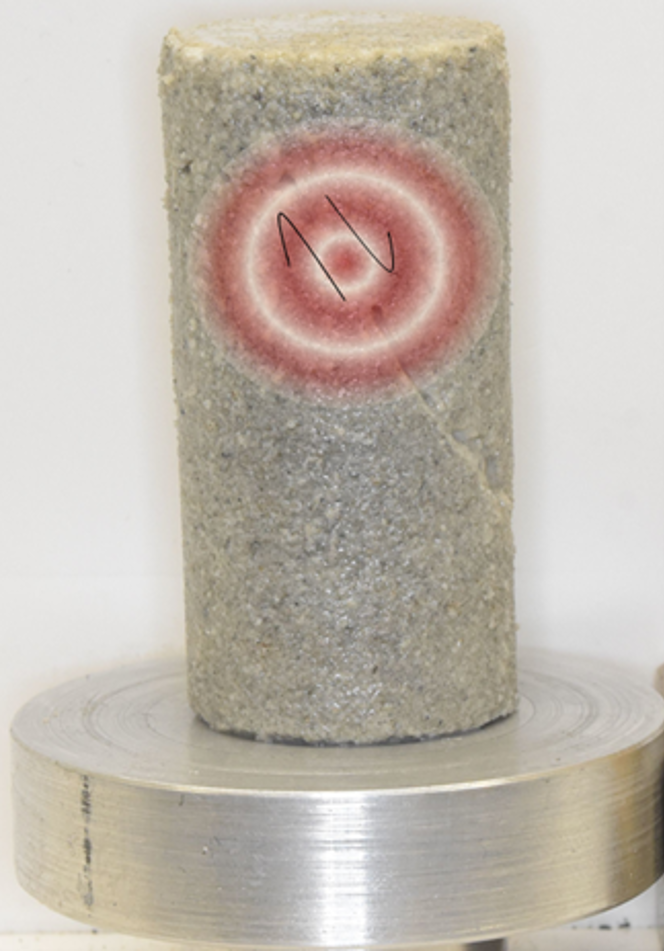Work Package 3: Rock mechanics
WP lead: Kees Hindriks, Shell.
The objective of WP3 is the characterization of the rheology and constitutive behaviour of rock material from North Sea caprock and reservoir rock in relation to stress history and operational stress changes and its sensitivity to a selection of observable monitoring attributes, validated against field observations. Laboratory experiments allow for direct quantification of the actual deformation behaviour of the reservoir and overburden rocks and estimates of burial and stress history. Translating the experimentally learned deformation behaviour to field scale in situ conditions and changes requires appropriate upscaling and variational statistics as well as a proper design of relevant and quantifiable attributes that can be extracted from field scale monitoring campaigns.

Task 3.1 – Characterize failure/creep in (ultra-)sonic measurements
By combining existing databases, literature data and dedicated rock deformation experiments, we will characterize the North Sea rheology of selected reservoir and cap rocks with emphasis on case studies addressed by the SHARP proposal (Aramis, Horda and Greater Bunter Sandstone area). Microseismic and sonic wave characterization of plasticity and creep within the range of expected site-specific stress conditions will be integrated into this characterization.
Task 3.2 – Stress and burial history impact on present day state
From existing databases, literature data and dedicated rock deformation experiments we will analyse the detailed evolution of K0, permeability and consolidation parameters considering the expected stress history as assessed by WP1. Both shallow depth geotechnical North Sea offshore site investigations and deeper burial depth reservoir and caprock will be assessed, including the effect of glacial loading, unloading and erosion episodes relevant for the various depths.
Task 3.3 Scale dependent model characterization and monitoring assessment
In the third task, learnings from task 3.1 and 3.2 will be used to design numerical constitutive behavior models for field scale applications to constrain the numerical assessment of historic and expected future deformation and flow conditions related to storage activities and development. In addition, measured acoustic and ultra-sonic responses from the deformation experiments under varying loading conditions, will be used to design relevant attributes to be extracted from on-site monitoring systems in support of quantifying deformation processed and altering stress conditions.